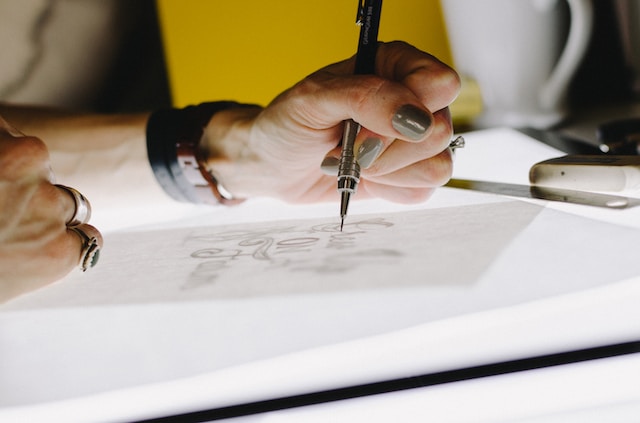The art of logo design plays a critical role in brand identity, but it takes on an added dimension when tailored to specific industries. This article delves into the unique challenges and sources of inspiration for designing logos across diverse sectors, underscoring the importance of industry-specific considerations in crafting effective brand symbols.
Understanding Industry-Specific Design Needs
In the diverse landscape of logo design, tailoring your approach to fit the specific needs of different industries is crucial. Every industry has its unique characteristics, audience expectations, and market dynamics, all of which must be considered to create a logo that truly resonates. This part of the article explores the importance of understanding these industry-specific design needs and the role of market research in achieving a logo that’s not only visually appealing but also strategically aligned with industry standards.
Identifying Unique Characteristics of Different Industries
Each industry has its own set of unwritten rules and expectations when it comes to logo design. For instance, the technology sector often favours sleek, modern designs that suggest innovation and progress, while the healthcare industry might prioritize designs that evoke trust and care. Understanding these subtleties is key to developing a logo that accurately reflects the industry’s essence.
Consider how the luxury fashion industry often leans towards logos that are elegant and minimalist, using high-end typography and monochromatic colour schemes. In contrast, children’s brands typically opt for bright colours, playful fonts, and fun imagery to appear more engaging and friendly to their young audience.
The Role of Market Research in Logo Design
Market research is an invaluable tool in the logo design process. It involves studying current trends, understanding the target audience, and analyzing competitors within the industry. This research provides insights into what works well in the market and what doesn’t, helping designers make informed decisions.
Understanding Trends and Audience
Keeping abreast of the latest trends is important, but so is understanding the preferences and expectations of the target audience. A logo for a tech startup might need to be edgy and bold to appeal to a younger, tech-savvy demographic, whereas a logo for a financial institution might need to be more conservative and traditional to evoke trust and stability.
Analyzing Competitors
Looking at competitors’ logos can provide a wealth of information. What colours and fonts are they using? What is their logo’s style and how does it communicate their brand message? This analysis helps in creating a logo that stands out in the crowded marketplace while still fitting within the industry’s framework.
Challenges in Various Industries
Designing a logo that perfectly encapsulates a brand’s essence is a challenging task, and this challenge intensifies when dealing with different industries. Each industry comes with its unique set of expectations, audience perceptions, and design conventions. In this article, we’ll explore the diverse challenges faced when designing logos for various industries and how designers navigate these to create impactful brand identities.
Technology and Innovation Sector
In the tech industry, logos need to convey innovation and progress. The challenge lies in creating a design that feels cutting-edge, yet won’t become outdated as technology rapidly evolves. Balancing modernity with timelessness is key.
Tech logos often require complex ideas to be distilled into simple, memorable symbols. Designers must find ways to visually represent abstract concepts like connectivity, speed, or intelligence in a straightforward yet striking manner.
Food and Beverage Industry
Logos in the food and beverage sector need to appeal to the senses. A significant challenge is creating a visual identity that can almost be ‘tasted’ or ‘smelled’ through imagery and colour, invoking freshness, flavour, or comfort.
Food is deeply tied to culture, and logos must often navigate cultural associations with certain foods or styles. The design must resonate with the target audience’s cultural palate while being sensitive to diverse interpretations.
Fashion and Apparel
In fashion, trends are constantly changing. Logos need to capture the current style while maintaining a timeless quality. This balance ensures the brand remains relevant across different fashion cycles.
For luxury brands, the logo must exude elegance and exclusivity. The challenge is in crafting a design that feels both sophisticated and unique, often relying on minimalist styles or classic typography to convey luxury.
Healthcare and Pharmaceuticals
Logos in healthcare need to communicate trust, care, and professionalism. Designers face the challenge of creating a logo that feels approachable and reassuring, without sacrificing a sense of expert reliability.
Healthcare logos often need to be universally recognizable, using symbols that are globally associated with health and wellness, yet distinct enough to stand out in a crowded market.
Financial Services
Financial logos must convey stability, trustworthiness, and security. The challenge is in designing a logo that instills confidence in the brand’s financial services, often utilizing solid shapes and strong, conservative colours.
While needing to appear modern and up-to-date, financial service logos also have to maintain a conservative and traditional feel, reflecting the industry’s values and the seriousness of financial matters.
On Final Thoughts
The intersection of creativity and industry-specific demands is where effective logo design thrives. This exploration highlights the importance of understanding the unique aspects of each industry to create logos that are not only visually striking, but also deeply resonate with their intended market.
